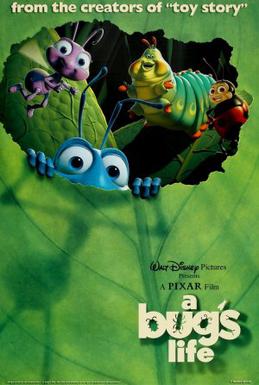
Ants are eusocial insects of the family Formicidae and, along with the related wasps and bees, belong to the order Hymenoptera. Ants evolved from vespoid wasp ancestors in the Cretaceous period. More than 13,800 of an estimated total of 22,000 species have been classified. They are easily identified by their geniculate (elbowed) antennae and the distinctive node-like structure that forms their slender waists.

Hymenoptera is a large order of insects, comprising the sawflies, wasps, bees, and ants. Over 150,000 living species of Hymenoptera have been described, in addition to over 2,000 extinct ones. Many of the species are parasitic. Females typically have a special ovipositor for inserting eggs into hosts or places that are otherwise inaccessible. This ovipositor is often modified into a stinger. The young develop through holometabolism —that is, they have a wormlike larval stage and an inactive pupal stage before they reach adulthood.

Stuart Leslie Goddard, known professionally as Adam Ant, is an English singer, musician, and actor. He gained popularity as the lead singer of new wave group Adam and the Ants and later as a solo artist, scoring 10 UK top ten hits from 1980 to 1983, including three UK No. 1 singles. He has also worked as an actor, appearing in many films and television episodes.

Fire ants are several species of ants in the genus Solenopsis, which includes over 200 species. Solenopsis are stinging ants, and most of their common names reflect this, for example, ginger ants and tropical fire ants. Many of the names shared by this genus are often used interchangeably to refer to other species of ant, such as the term red ant, mostly because of their similar coloration despite not being in the genus Solenopsis. Both Myrmica rubra and Pogonomyrmex barbatus are common examples of non-Solenopsis ants being termed red ants.

Dr. Henry Jonathan Pym is a character appearing in American comic books published by Marvel Comics. Created by penciller Jack Kirby, editor-plotter Stan Lee and writer Larry Lieber, Pym debuted in Tales to Astonish #27. He returned several issues later as the original iteration of Ant-Man, a superhero with the power to shrink to the size of an ant. He later assumed other superhero identities, including the size-changing Giant-Man and Goliath; the insect-themed Yellowjacket; and briefly, the Wasp. He is a founding member of the Avengers superhero team, and the creator of the robotic villain Ultron. He is also the ex-husband of Janet van Dyne and the father of Nadia van Dyne, his daughter by his first wife, Maria Pym.

A Bug's Life is a 1998 American animated comedy film produced by Pixar Animation Studios for Walt Disney Pictures. It is Pixar's second feature-length film, following Toy Story (1995). The film was directed by John Lasseter, co-directed by Andrew Stanton, and produced by Darla K. Anderson and Kevin Reher, from a screenplay written by Stanton, Donald McEnery, and Bob Shaw, and a story conceived by Lasseter, Stanton, and Joe Ranft. It stars the voices of Dave Foley, Kevin Spacey, Julia Louis-Dreyfus, and Hayden Panettiere. In the film, a misfit ant named Flik, looks for "tough warriors" to save his ant colony from a protection racket run by a gang of grasshoppers. However, the "warriors" he brings back are a troupe of Circus Bugs. The film's plot was initially inspired by Aesop's fable The Ant and the Grasshopper.

Anthony David McPartlin is an English television presenter, former singer, rapper and actor. He is best known for working alongside Declan Donnelly as part of the presenting duo Ant & Dec.

Ant & Dec are a British television presenting duo consisting of Anthony McPartlin and Declan Donnelly from Newcastle upon Tyne. After meeting as child actors on CBBC's drama Byker Grove, they performed together as pop musicians PJ & Duncan, the names of their characters from the series.

In computer science and operations research, the ant colony optimization algorithm (ACO) is a probabilistic technique for solving computational problems that can be reduced to finding good paths through graphs. Artificial ants represent multi-agent methods inspired by the behavior of real ants. The pheromone-based communication of biological ants is often the predominant paradigm used. Combinations of artificial ants and local search algorithms have become a preferred method for numerous optimization tasks involving some sort of graph, e.g., vehicle routing and internet routing.

Paul Stephen Rudd is an American actor. He studied theater at the University of Kansas and the American Academy of Dramatic Arts before making his acting debut in 1991. He received a star on the Hollywood Walk of Fame in July 2015, and was included on the Forbes Celebrity 100 list in 2019. In 2021, he was named People magazine's "Sexiest Man Alive".

Lycaenidae is the second-largest family of butterflies, with over 6,000 species worldwide, whose members are also called gossamer-winged butterflies. They constitute about 30% of the known butterfly species.

An ant colony is a population of ants, typically from a single species, capable of maintaining their complete lifecycle. Ant colonies are eusocial, communal, and efficiently organized and are very much like those found in other social Hymenoptera, though the various groups of these developed sociality independently through convergent evolution. The typical colony consists of one or more egg-laying queens, numerous sterile females and, seasonally, many winged sexual males and females. In order to establish new colonies, ants undertake flights that occur at species-characteristic times of the day. Swarms of the winged sexuals depart the nest in search of other nests. The males die shortly thereafter, along with most of the females. A small percentage of the females survive to initiate new nests.

Ant-Man is the name of several superheroes appearing in books published by Marvel Comics.

Carpenter ants are large ants indigenous to many forested parts of the world.

Ant-Man is a fictional character appearing in American comic books published by Marvel Comics. Created by David Michelinie, Bob Layton and John Byrne, Scott Lang first appeared in The Avengers #181 and in Marvel Premiere #47 as the second superhero character to use the Ant-Man name in the Marvel Universe. He is a reformed thief and an electronics expert. He was a member of the Avengers, the Fantastic Four and the Guardians of the Galaxy, the main character in the comic-book series FF and, in 2015, he became the title character in the series Ant-Man.

The Indiana Mad Ants are an American professional basketball team based in Indianapolis, Indiana that competes in the NBA G League. The Mad Ants are the affiliate team of the NBA's Indiana Pacers and, since 2023, they have played their home games at Gainbridge Fieldhouse, which they share with the Pacers.

Adam and the Ants were an English pop band that formed in London in 1977. The band existed in two versions, both fronted by Adam Ant, between 1977 and 1982. The first phase began when the band were founded in May 1977 and were called the Ants until November of that year. They later changed their style from punk rock to post-punk and new wave and released one album. The final line-up of this version consisted of Dave Barbarossa, Matthew Ashman, and Leigh Gorman—all of whom left the band in January 1980 at the suggestion of manager Malcolm McLaren to form Bow Wow Wow.

Ant-Man is a 2015 American superhero film based on the Marvel Comics characters of the same name: Scott Lang and Hank Pym. Produced by Marvel Studios and distributed by Walt Disney Studios Motion Pictures, it is the 12th film in the Marvel Cinematic Universe (MCU). The film was directed by Peyton Reed from a screenplay by the writing teams of Edgar Wright & Joe Cornish and Adam McKay & Paul Rudd. It stars Rudd as Scott Lang / Ant-Man alongside Evangeline Lilly, Corey Stoll, Bobby Cannavale, Michael Peña, Tip "T.I." Harris, Anthony Mackie, Wood Harris, Judy Greer, Abby Ryder Fortson, David Dastmalchian, and Michael Douglas as Hank Pym. In the film, Lang must help defend Pym's Ant-Man shrinking technology and plot a heist with worldwide ramifications.

Ant-Man and the Wasp is a 2018 American superhero film based on Marvel Comics featuring the characters Scott Lang / Ant-Man and Hope Pym / Wasp. Produced by Marvel Studios and distributed by Walt Disney Studios Motion Pictures, it is the sequel to Ant-Man (2015) and the 20th film in the Marvel Cinematic Universe (MCU). The film was directed by Peyton Reed and written by the writing teams of Chris McKenna and Erik Sommers, and Paul Rudd, Andrew Barrer and Gabriel Ferrari. It stars Rudd as Lang and Evangeline Lilly as Hope van Dyne, alongside Michael Peña, Walton Goggins, Hannah John-Kamen, David Dastmalchian, Tip "T.I." Harris, Judy Greer, Bobby Cannavale, Randall Park, Abby Ryder Fortson, Michelle Pfeiffer, Laurence Fishburne, and Michael Douglas. In the film, the titular pair work with Hank Pym (Douglas) to retrieve Janet van Dyne (Pfeiffer) from the Quantum Realm.

Ant-Man and the Wasp: Quantumania is a 2023 American superhero film based on Marvel Comics featuring the characters Scott Lang / Ant-Man and Hope Pym / Wasp. Produced by Marvel Studios and distributed by Walt Disney Studios Motion Pictures, it is the sequel to Ant-Man (2015) and Ant-Man and the Wasp (2018), and the 31st film in the Marvel Cinematic Universe (MCU). It was directed by Peyton Reed, written by Jeff Loveness, and stars Paul Rudd as Scott Lang and Evangeline Lilly as Hope van Dyne, alongside Jonathan Majors, Kathryn Newton, David Dastmalchian, Katy O'Brian, William Jackson Harper, Bill Murray, Michelle Pfeiffer, Corey Stoll, and Michael Douglas. In the film, Lang, Van Dyne, and their family are accidentally transported to the Quantum Realm and face off against Kang the Conqueror (Majors).



















